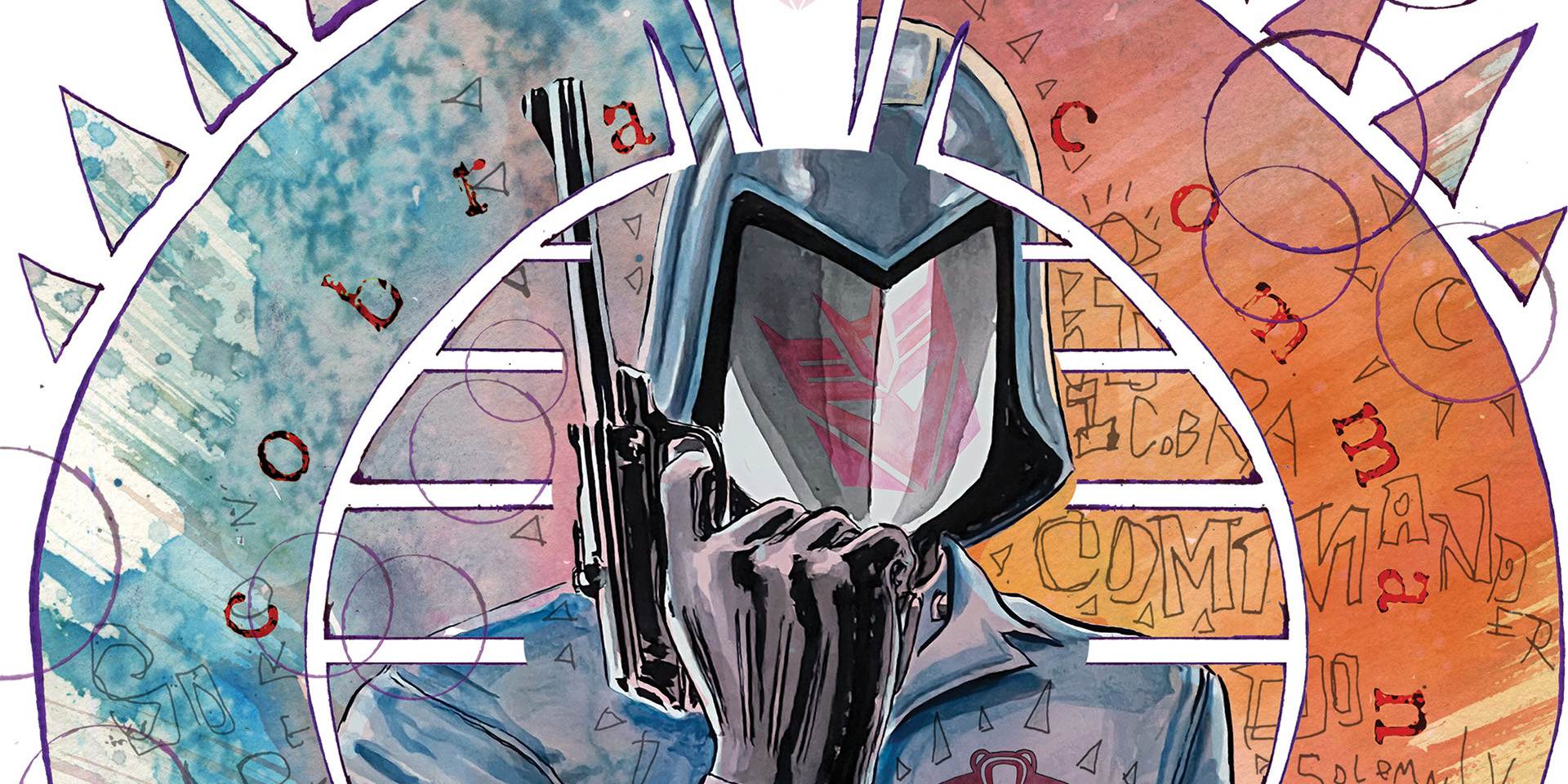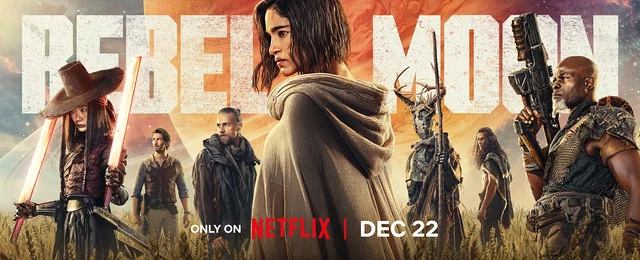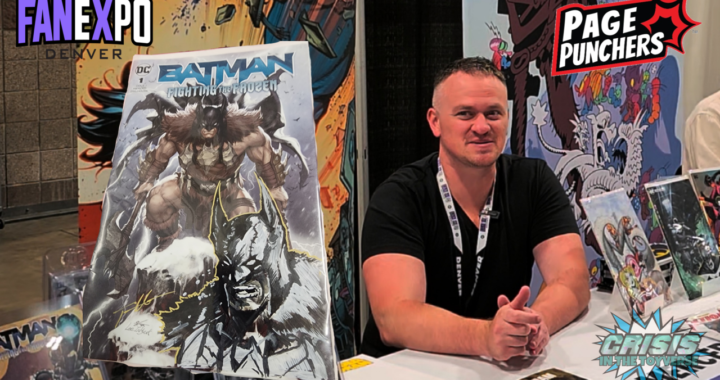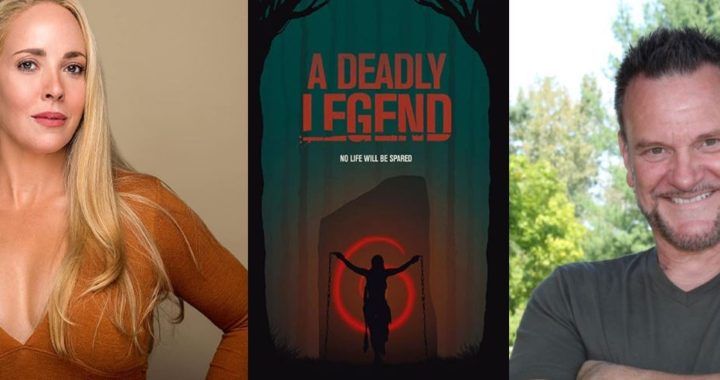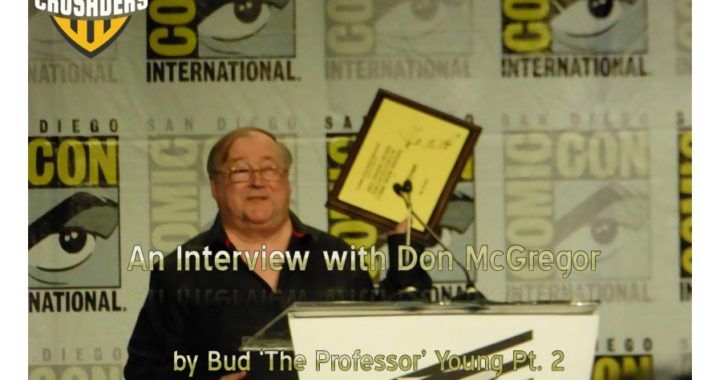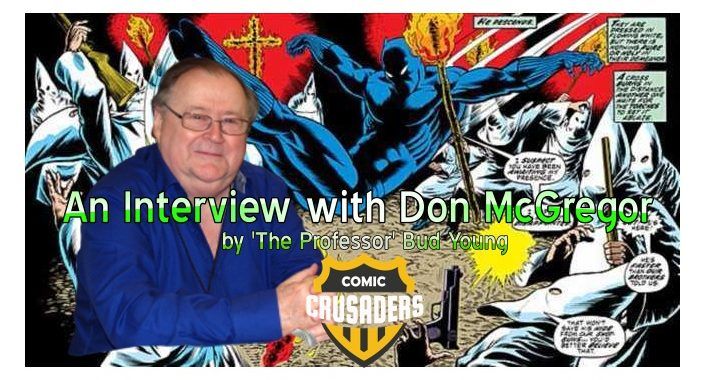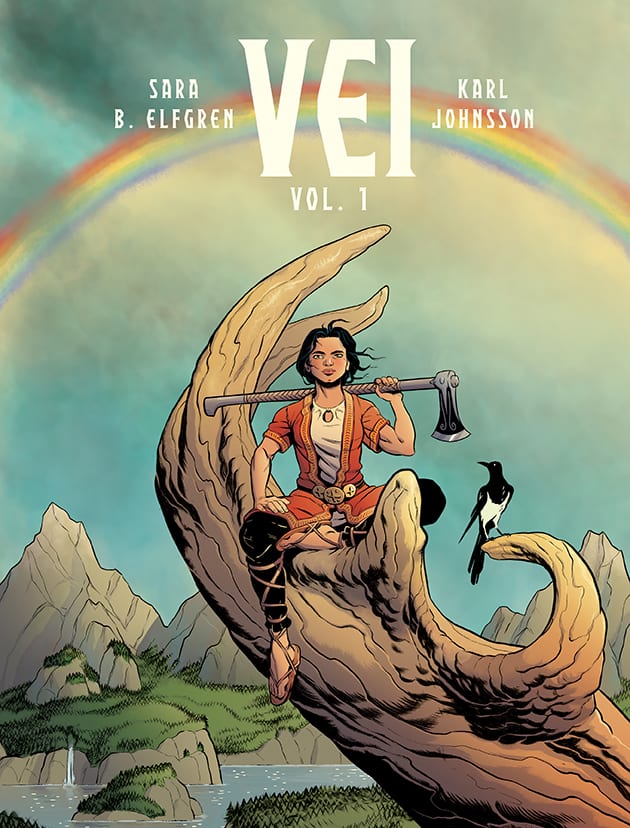
Bracey chats with Vei creators Sara Elfgren and Karl Johnsson
Comic Crusaders recently reviewed volume one of the comic series Vei by Sara Elfgren and Karl Johnsson. After reviewing the I reached out to the creators who graciously granted me the following interview.
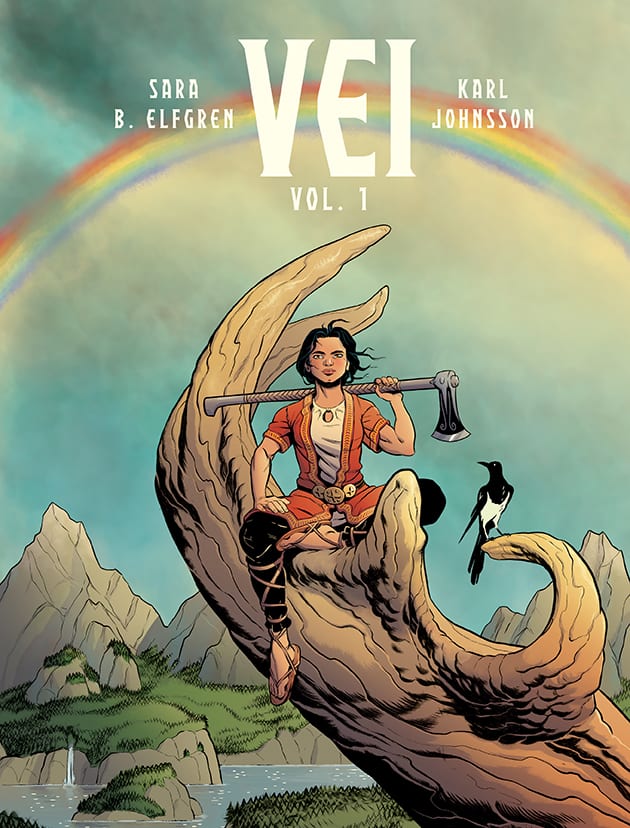 So where did the idea of Vei come from? Was it solely your idea Sara or perhaps Karl’s, a collaboration or is this straight out of some Norse lore?
So where did the idea of Vei come from? Was it solely your idea Sara or perhaps Karl’s, a collaboration or is this straight out of some Norse lore?
KARL: For many years, I dreamed of making a comic about humans who live in the land of the giants and worship them as gods. About eight years ago, Sara and I started discussing the idea and more pieces fell into place.
SARA: We call Vei epic fantasy inspired by Norse mythology. We use the myths, but we play around with them – a lot.
When most of the world thinks of Norse mythology we often think of theAesir or Asgardian gods. In America I’m sure this is due to the popularization of the mythos through Marvel comics, but you decided to tell a tale from the perspective of their legendary enemies, the Jotun or giants. What was the thinking that led to this? Most of the legends I’m personally familiar with have the gods as “heroes”“, so I can’t help but wonder if this idea comes from legend or a perspective that you thought might be interesting to explore.
SARA: Yes, in the Norse myths, the giants are traditionally “the bad guys”“. I find a great appeal in revisiting old tales and flipping the perspective. It opens up new possibilities for storytelling.
KARL: As an artist I“m always drawn to the unexpected.
It’s not often we see giants portrayed in a favorable light and I don’t think I’ve ever seen them looked upon as gods in their own right. Can you tell me a little more about this.
SARA: It may sound absurd to use the word “realistic”“ when talking about Vei. But if humans living in a prehistoric society actually met giants, they most definitely would worship them as gods.
KARL: Especially if the giants are as good-looking as ours! I was very inspired by the animated movie La Planete Sauvage (The Fantastic Planet, 1973) where giant aliens keep humans as pets. That“s where the inspiration for Sól“s “pet collection”“ came from.
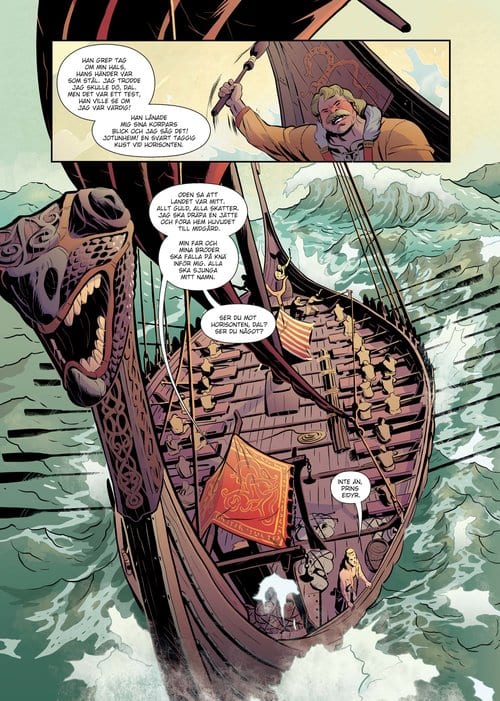 The designs of the Jotun are very interesting, these beings are not just enormous but also have certain animalistic features such as horns, tails and goat-like eyes. Was this something that you both collaborated on or did one of you have more of an idea as to what the giants should look like?
The designs of the Jotun are very interesting, these beings are not just enormous but also have certain animalistic features such as horns, tails and goat-like eyes. Was this something that you both collaborated on or did one of you have more of an idea as to what the giants should look like?
KARL: I worked on this design for many years, even before I met Sara. The main idea was to make the giants appear powerful and truly ancient. Some of the inspiration came from the Egyptian and Babylonian civilizations where gods are often depicted with animal heads. And there is something frightening and awe-inspiring about creatures with horns and goat eyes.
SARA: In the Western European Christian culture goats are associated with paganism and Satanic evil. It“s interesting to see this iconography used in a different way, I think.
Karl your artwork is quite beautiful, very clean and precise. I couldn’t help but notice there is a certain aesthetic to it. Many of the characters have what to me appeared to have almost feminine features including large expressive eyes or full sensual lips. In some ways it reminded me of the comic series Elfquest’s particular artistic choices. Its not the typical depiction of rough figures like Vikings. Is this just your style as someone who has illustrated children’s books? Or is it a particular choice given the story as Odin is the most obvious exception to this in the story.
KARL: Thank you! It had nothing to do with the children“s books, I worked on them after I started working on Vei. Funny enough I have never read Elfquest ”¦
SARA: ”¦ but I did as a teen, and I loved it. I can definitely see the connection.
KARL: I“ve always found it interesting to play around with gender norms and expectations of masculinity and male beauty. That goes for how I draw all genders.
SARA: In some reviews people have assumed that I was the artist and Karl was the writer. They think Karl draws like a girl.
KARL: I take that as a huge compliment, of course.
SARA: There are standard ways of how to draw a “sexy woman”“ or a “sexy man”. It can be really hard for an artist to step out of that comfort zone. But Karl does that and he does it so well. There is this scene where Vei is sitting naked in her bedroom, and someone walks in on her. I remember seeing Karl“s first sketch of that panel, and I just loved it. She“s so at ease sitting there, she doesn“t care that she“s naked. She looks great, but she isn“t objectified.
KARL: We wanted to create a world where there are other norms concerning nakedness and sex.
SARA: It also connects to the change of perspective. We are used to seeing Norse myths retold in a very grim and bleak context. We wanted to try something new.
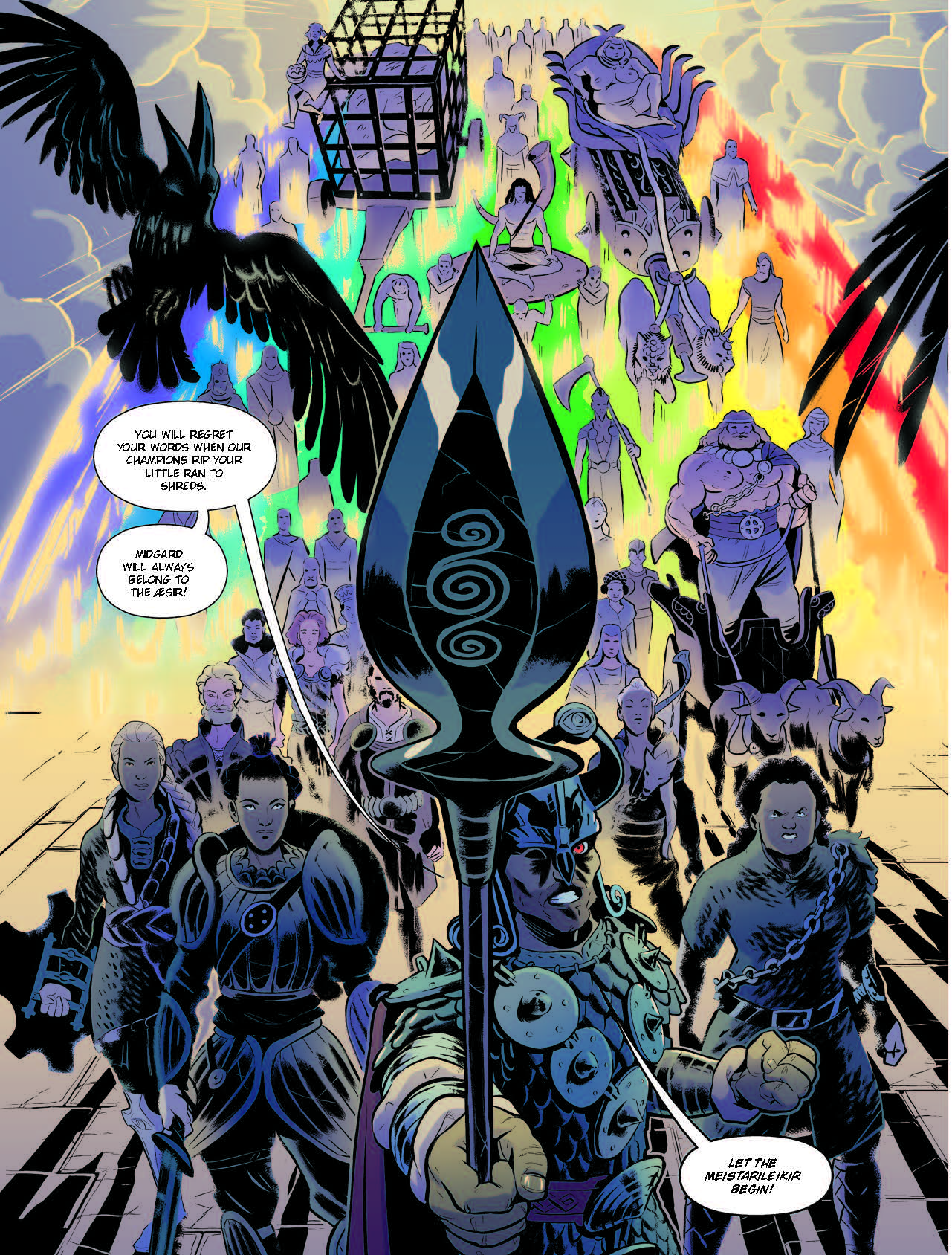 The art as well as the story enhances the idea of the Aesir being cruel and capricious. I wonder does Odin represent some sort of patriarchal force in this story as the tale comes across as very female centric, perhaps even feminist in a way.
The art as well as the story enhances the idea of the Aesir being cruel and capricious. I wonder does Odin represent some sort of patriarchal force in this story as the tale comes across as very female centric, perhaps even feminist in a way.
SARA: I can see where you“re coming from, but we didn“t want to create a dualistic conflict like “matriarchy vs. patriarchy”“. I think that becomes more clear in the final volume. We wanted to fully use the possibilities of epic fantasy. To create a world with different norms. In the Vei universe, gender and sex aren“t significant in the the way we are used to. We found it very liberating and exciting to work with a world like that. It“s escapism, in a way.
KARL: And perhaps feminist, but in a different sense.
I find the depiction of Loki fascinating in this book. His first appearance is very obviously female but his second is very androgynous. I’m aware that in the legends Loki has adopted female forms before, and if I remember correctly once even gave birth as a mare. Was the idea to make Loki ambiguous a purposeful one creatively or was it story driven idea.
SARA: Yes, you“re quite right. In the myths Loki is an ambiguous, trickster character who shapeshifts and, as you say, even gives birth. We definitely wanted to expand on that, because it“s different and exciting storywise and character-wise.
KARL: I mean, who doesn“t want to draw a gender-fluid shapeshifting god?
One of the more interesting aspects of the story for me was the relationship between man and his god or gods. Your main and side characters initially start off with a very fundamental relationship with their deities. It seems that the side characters die because they remain inflexible in their beliefs while the main characters who begin to question their faith continue to progress forward and grow stronger. Can you expand on this idea or am I way off base here?
KARL: That“s very interesting! We haven“t thought about it like that, but it makes sense.
SARA: Yes, it“s an interesting observation. I guess our main characters are more open to new perspectives, and in a sense more true to some values that they carry within themselves. Empathy, if you will. Those values are more important to them than the belief systems that they grew up with.
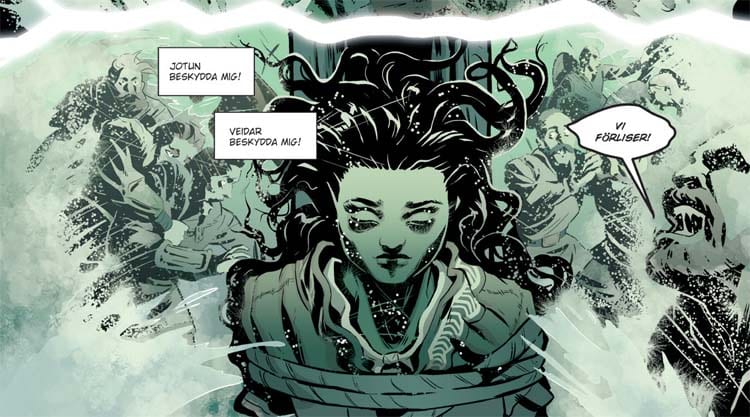 Vei is a great character, she is strong yet has vulnerabilities that make her relatable. She is every bit the epic heroine, going on a journey of discovery before rising to the challenge she was born to face. Is she based on anyone in legend? Anyone you know? An amalgamation of many characters or people? Basically where did she come from?
Vei is a great character, she is strong yet has vulnerabilities that make her relatable. She is every bit the epic heroine, going on a journey of discovery before rising to the challenge she was born to face. Is she based on anyone in legend? Anyone you know? An amalgamation of many characters or people? Basically where did she come from?
SARA: Thank you! That“s exactly how we wanted her to come across!Â
KARL: I“ve always loved ass-kicking heroines. As a teenager I adored Battle Angel Alita and the female warriors in kung-fu movies.
SARA: I loved writing Vei. Sometimes a heroine/hero in the classical sense can come across as a bit boring, like a goody two-shoes. But it doesn“t have to be like that, and that“s what we wanted to explore with Vei. She is very much a heroine with a strong sense of right and wrong, but she is also flawed, vulnerable, impulsive and so much more.
Are the humans living in Jotunheim part of the mythological cannon or is that something you devised for the story?
KARL: As I recall there“s nothing in the lore about humans living among giants.
SARA: In short: We made it up.
Karl the story is richly textured with details, did you have to do a lot of research to get the look of the book right? If so did you reference a lot of Viking art or historical artifacts or tests on the period?
KARL: When I grew up in the 80“s, vikings and Norse gods were very much associated with the Swedish romantic nationalist aesthetics of the late 1800“s. I really wanted to get away from that. I went to the sources and looked at clothes and weapons from the Viking age, but also from the Bronze Age that predated it. I also found a lot of inspiration in the Sumerian and Babylonian cultures. But since it“s fantasy, we could also allow ourselves to be inspired by anachronistic fashion from the Middle Ages, and even the 18th Century.
SARA: Vei“s armour in final volume is inspired by The Witcher 3.
KARL: Like I said – it“s fantasy.
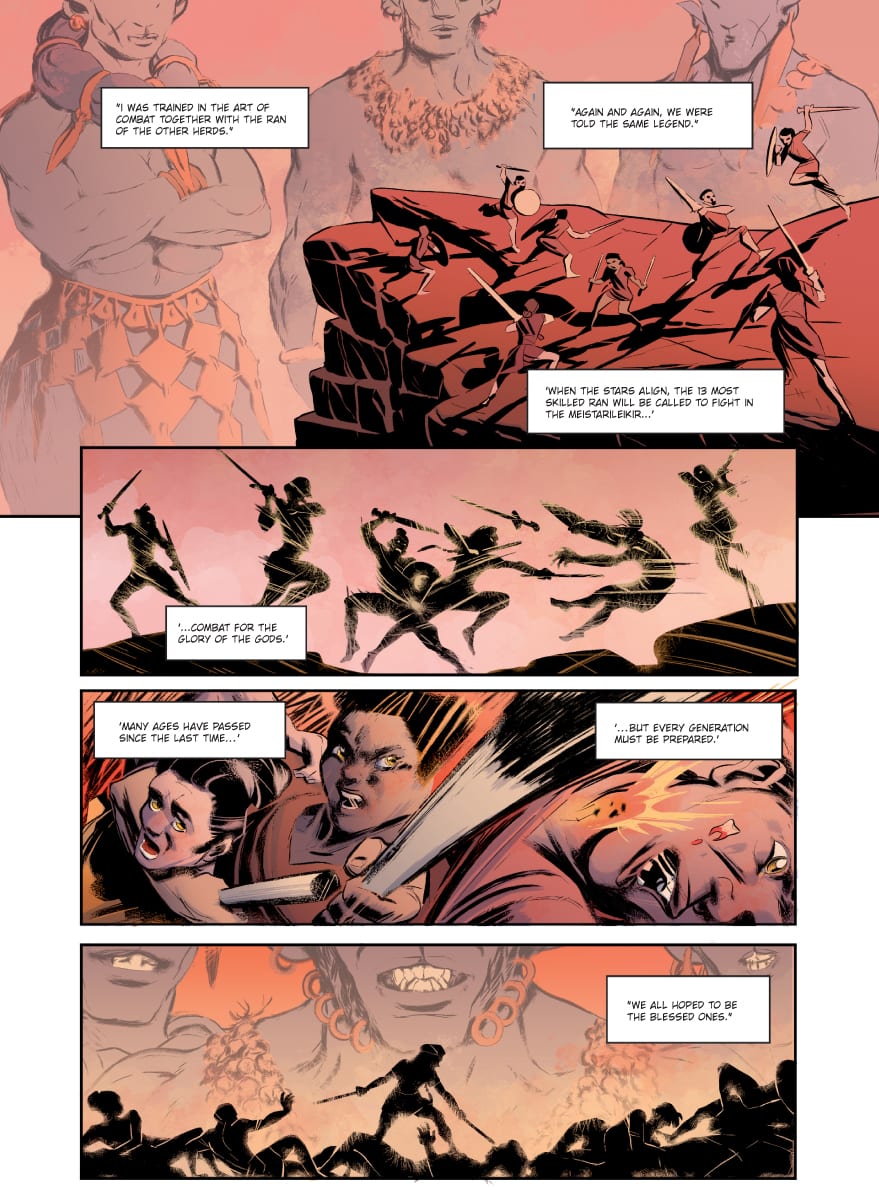 Loki is half human and half giant but also a trickster and mischief maker. Do you have any insight as why he is among the Aesir when he is half Jotun and half mortal. It seems like a combination of things they would not tolerated in their company, particularly Odin or Thor. Do you have a reason why he is allowed to be one of them in Vei given his heritage and history?
Loki is half human and half giant but also a trickster and mischief maker. Do you have any insight as why he is among the Aesir when he is half Jotun and half mortal. It seems like a combination of things they would not tolerated in their company, particularly Odin or Thor. Do you have a reason why he is allowed to be one of them in Vei given his heritage and history?
KARL: In the Norse myths Loki is all giant, but that would be pretty confusing in this context. In the myths Odin and Loki are blood brothers and they have a complicated relationship. Odin also has a trickster side to him, and he needs Loki.
SARA: We made Loki half Aesir, half mortal, and Odin“s child, because we found that interesting storywise. It puts Loki on a different level, closer to Vei and other humans. Loki has many skills that Odin uses for his own purposes. In the final volume, we learn a lot more about Loki and also Odin and the other Aesir. They“re like a really dysfunctional mob family. Like The Sopranos with magic and swords.
Sara I see in your bio that you are an author who has worked in many mediums including as a playwright. Is there a chance that Vei might one day be realized as a play, I personally think a musical would be pretty great given the Norse traditions of the Skalds.
SARA: Oh, Bragi would love that!
KARL: And I would too! I“d love to be part of it!
SARA: Actually, Karl was once cast as Danny in Grease.
KARL: But that didn“t turn out so well.
SARA: This is painful territory. But yes, a Vei musical would be awesome!
KARL: We“ve often joked about how impossibly expensive it would be to adapt Vei to TV or film. This is one of the many strengths of the comic medium.
SARA: You can spend the whole budget of a blockbuster on one panel.
KARL: But yes, an adaptation would very exciting, to any medium really.
SARA: Perhaps a video game?
KARL: If you“re a producer and reading this, please e-mail us.
Karl most graphic artists in the comic industry are not colorists, yet your work is both subtle and bold in this book. Is that something you prefer, having that complete creative control? Or the ability to know that the art from start to finish is exactly as you envisioned it. I know from personal experience that doing all of the art chores on a book is a monumental task. As a follow up how long did it take you to complete Vol 1 of Vei?
KARL: Again, thank you! It wasn“t so much a choice as a necessity. In Sweden there is no comics industry, unfortunately.
SARA: It“s very rare even to have an artist and a writer to collaborate like we did.
KARL: If I would have had a colorist, I would have had to pay them myself, and I couldn“t afford that.
SARA: Vei started out as a serial in a magazine called Utopi. It ran there for about two years, but then we stopped mid-story.
KARL: I had evolved so much as an artist, the difference was huge between the first chapters and the last ones. I wanted a complete do-over.
SARA: And there was so much in the story that we wanted to explore and elaborate on.
KARL: So we started over, against everyone“s advice. We could use some designs and story beats, but it basically was a complete reboot.
SARA: While we were working on the new version, we realized that we needed to release it in two volumes. The story got so big.
KARL: In 2015 we had volume one and two in rough sketches, so you could actually read them. Then I started inking and coloring volume one. It took me about two years. It was gruelling work, but I evolved a lot as an artist. I like coloring, but I wouldn’t mind working with a colorist at some point.
 Karl were you a concept and storyboard artist before being a graphic novelist? Do you find the skills used in either medium translate easily to the other or is there some difficulty in transitioning from one format to another?
Karl were you a concept and storyboard artist before being a graphic novelist? Do you find the skills used in either medium translate easily to the other or is there some difficulty in transitioning from one format to another?
KARL: Concept art and story-boarding has been something I“ve been doing on the side to pay the rent. Most of the time I story-boarded for commercials. It“s quite stressful and if you do it too much you can feel your soul dying. But it was fun to work with TV and film.
SARA: We actually worked on the same film: The Circle (2015). The director of the film, Levan Akin, was the one who introduced me to Karl about ten years ago.
KARL: I made some concept art for the film, and also some artwork and props that are in the movie.
Another idea that struck me while reading Vei is one we have seen throughout history, that of a “primitive”“ society coming into conflict with a more advanced and aggressive one. The humans in Jotunheim appear to live harmoniously within their environment. Other than training for the eventual tournament between the gods and giants there is no conflict, in fact these people are forbidden from killing on another. This is the direct opposite of the Viking culture and of their gods. In the history of the war between the gods and giants, depicted as a series of paintings we even see the gods wielding “technology”“ if you will in the form or divine powers or sorcery. While the Jotun have access to such powers they refrain for the sake of honor during the Meistarileikir. Is this related to the idea of the noble savage versus the imperial power? A similar idea was explored in the film Avatar which featured giant people with tails who lived in harmony with nature. Was this coincidence or inspiration?
SARA: I think the Aesir and the Jotun appear more as contrasts in the first volume, but as the story progresses things get more complicated. It“s a kind of narrative that we enjoy ourselves.
KARL: I just want to point out that I thought of blue giants before Avatar.
SARA: It“s true, he was first. It“s funny because I wrote a PSVR game that just came out. It“s called Ghost Giant and it features – a blue giant.
KARL: Maybe it“s something that“s deeply rooted in our collective unconscious. Blue giants.
On the idea of gods in the story it seems that gods are not necessarily benevolent, all powerful care givers of humanity but merely beings that have enormous power over them. While this idea doesn’t seem to bother the majority of the Aesir, Veidar is immediately uncomfortable when he angrily reminds Vei that he is her god. Will this idea play out more in volume two?
KARL: Veidar has acted more like mentor than like an authoritarian god to Vei. The other giants are more comfortable in their roles as all powerful gods. It shows in the way they relate to “their”“ humans.
SARA: The other giants think Veidar is too lenient with Vei and the ran who came before her. And yes, we will learn more about him and Vei in the final volume.
KARL: This seems to be your standard answer, Sara.
SARA: Yup.
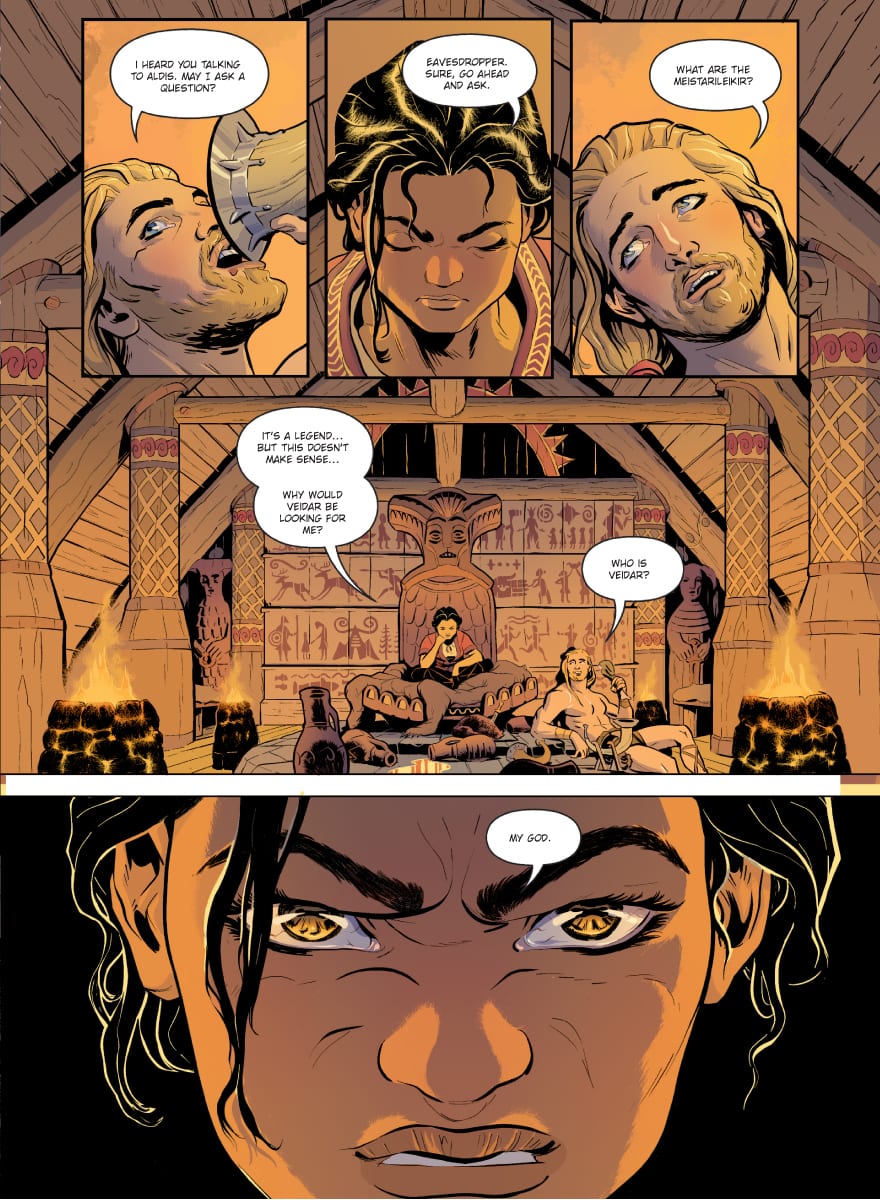 The giants are like shepherds/stewards of their people with some like Veidar treating their subjects like their children instead of pets whereas Odin is referred to as master by those under him. I can’t help but wonder what the world will become if the Jotun win. Further is there a morality play her within the idea of beings of greater power than man ruling over him when there appears to be little difference in terms of reason and wisdom between the worshipped and the worshipers.
The giants are like shepherds/stewards of their people with some like Veidar treating their subjects like their children instead of pets whereas Odin is referred to as master by those under him. I can’t help but wonder what the world will become if the Jotun win. Further is there a morality play her within the idea of beings of greater power than man ruling over him when there appears to be little difference in terms of reason and wisdom between the worshipped and the worshipers.
SARA: Yes, there is a difference between how the giants and the Aesir use their power. But neither the humans of Jotunheim nor the humans of Midgard are free. We explore this further ”¦
KARL: ”¦ in the final volume!
What inspires the two of you, obviously mythology is a great sandbox for you both to play in but what else gets you excited and wanting to create?
KARL: Everything really!
SARA: Video games, music ”¦
KARL: Classical art, nature, photography.
SARA: Other comics of course. But like Karl said, we find inspiration everywhere. I think that“s part of growing and evolving as an artist, honing the instinct to find the things that get your ideas going. It’s important to keep an open mind.
The two of you have created a rich world with nuanced characters which I hope our readers will enjoy as much as I have. Is there anything you would like to add in closing?
SARA: Thank you so much!
KARL: Yes, thank you for your questions! We have nothing to add!
SARA: Keep your eyes peeled for Vei – the Musical!
To purchase Vei go here: https://insightcomics.com/product/vei-vol-1/
Author Profile
Latest entries
 TV & MOVIESJanuary 16, 2024Indie Movie Review: Amends of the Father
TV & MOVIESJanuary 16, 2024Indie Movie Review: Amends of the Father Comic BooksJanuary 15, 2024REVIEW: Cobra Commander #1
Comic BooksJanuary 15, 2024REVIEW: Cobra Commander #1 Cinema CrusadersJanuary 5, 2024MOVIE REVIEW: DISTANT TALES
Cinema CrusadersJanuary 5, 2024MOVIE REVIEW: DISTANT TALES Movie ReviewsJanuary 3, 2024MOVIE REVIEW: REBEL MOON
Movie ReviewsJanuary 3, 2024MOVIE REVIEW: REBEL MOON

